Cuba Flag Meaning
Five horizontal stripes alternating blue and white with a red equilateral triangle at the hoist containing a white five-pointed star, representing the three original provinces, purity, the blood of martyrs, and the independence of Cuba.
- Continent
- North America
- Adopted
- 1902
- Ratio
- 1:2
- Colors
- blue, white, red
- Designer
- Narciso López
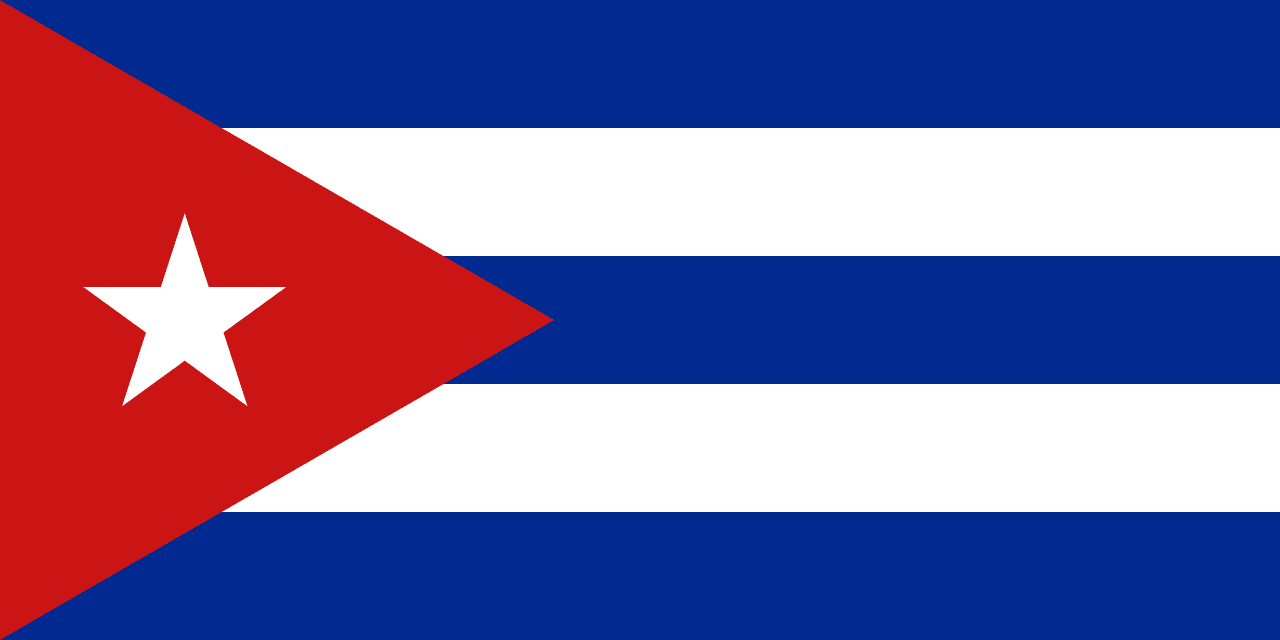
Symbolism
Blue Stripes: Represent the three original provinces of Cuba during colonial times (Oriente, Las Villas, and Occidente), symbolizing the geographic divisions of the island and the unity of all regions in the struggle for independence from Spanish rule.
White Stripes: Represent the purity of ideals and the virtue of the Cuban independence movement, symbolizing the noble intentions of those who fought for freedom and the peaceful aspirations of the Cuban people.
Red Triangle: Represents the blood shed by martyrs in the struggle for independence, symbolizing the sacrifice made by Cuban patriots who died fighting against Spanish colonialism and for the sovereignty of the Cuban nation.
White Five-Pointed Star: Represents the independent state of Cuba and the light of freedom, symbolizing the guiding star that leads the nation toward liberty, progress, and the fulfillment of Cuban national aspirations.
History
- Pre-1492: The island was inhabited by indigenous peoples including the Taíno, Ciboney, and Guanahatabey, who developed sophisticated societies adapted to the Caribbean environment before European contact.
- 1492-1898: Christopher Columbus claimed the island for Spain in 1492, leading to over 400 years of Spanish colonial rule, the importation of enslaved Africans for sugar plantations, and the development of Cuban Creole culture.
- 1850s: Narciso López designed the current flag as a symbol of Cuban independence from Spain, with the design created in New York by Cuban exiles planning revolutionary activities against Spanish rule.
- 1868-1898: The Ten Years' War and subsequent independence struggles used various revolutionary flags, with López's design becoming the symbol of Cuban patriotic resistance and the desire for freedom from colonial rule.
- May 20, 1902: Cuba gained independence from the United States following the Spanish-American War, officially adopting López's flag design as the national flag of the Republic of Cuba.
- 1902-1959: The flag represented the Cuban Republic through periods of U.S. influence, political instability, and various governments, including the dictatorship of Fulgencio Batista in the 1950s.
- January 1, 1959: Fidel Castro's revolutionary forces triumphed, establishing a socialist government that maintained the same flag while transforming Cuba's political and economic systems and aligning with the Soviet Union.
- 1959-Present: The flag has represented socialist Cuba through the Cold War, the Bay of Pigs invasion, Cuban Missile Crisis, economic challenges after Soviet collapse, and ongoing U.S. embargo while maintaining its revolutionary identity.
Trivia
- Cuba's flag was designed in 1849, over 50 years before the country achieved independence, making it one of the few flags created before the nation it represents was established.
- The flag represents the largest island in the Caribbean, known as the 'Pearl of the Antilles,' with a distinctive elongated shape stretching over 1,000 kilometers from east to west.
- Cuba has one of the world's highest literacy rates at nearly 100%, achieved through massive education campaigns following the 1959 revolution.
- The flag flies over a country famous for cigars, rum, and vintage American cars from the 1950s that still fill the streets of Havana due to the long-standing U.S. embargo.
- Havana's Old Town (Habana Vieja) is a UNESCO World Heritage Site featuring well-preserved Spanish colonial architecture and serving as a symbol of Cuban cultural heritage.
- Cuba has produced world-renowned musicians and contributed significantly to Latin music genres including son, salsa, mambo, and cha-cha-cha that have influenced global music.
- The flag represents a country with an advanced healthcare system that has achieved health indicators comparable to developed nations despite economic challenges.
- Cuba is famous for baseball, which is the national sport, and has produced many players who have excelled in Major League Baseball after defecting or emigrating.
- The island has pristine beaches and coral reefs, making it a biodiversity hotspot with endemic species found nowhere else, including the world's smallest bird (bee hummingbird).
- Cuba's revolutionary leader Fidel Castro ruled for nearly 50 years, making him one of the longest-serving heads of state in modern history before transferring power to his brother Raúl.
- The flag flies over a country that has sent medical missions worldwide, with Cuban doctors and healthcare workers providing assistance in Africa, Latin America, and other regions.
- Cuban cuisine blends Spanish, African, and indigenous influences, with dishes like ropa vieja, black beans and rice (moros y cristianos), and plantains being staples.
- The U.S. naval base at Guantanamo Bay remains on Cuban territory despite the hostile relationship between the two countries, creating a unique geopolitical situation.
- Cuba has a strong tradition in ballet and classical music, with the Cuban National Ballet and musicians like Benny Moré gaining international recognition.
- The flag represents a country that has maintained its socialist system longer than any other in the Western Hemisphere, surviving the collapse of the Soviet Union and continued economic pressures.
Related Countries
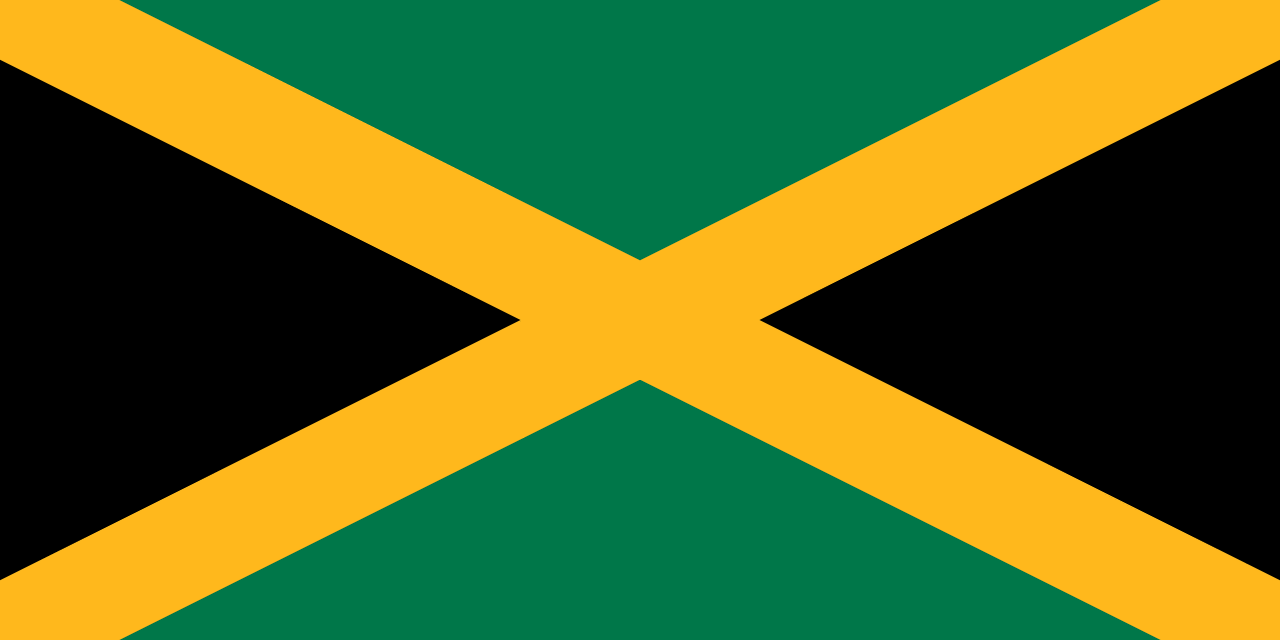
Jamaica
North America
A diagonal cross pattern dividing the flag into four triangles, with green triangles at top and bottom, black triangles at hoist and fly, and yellow diagonal cross, symbolizing the natural beauty, strength of the people, and golden sunshine of Jamaica.
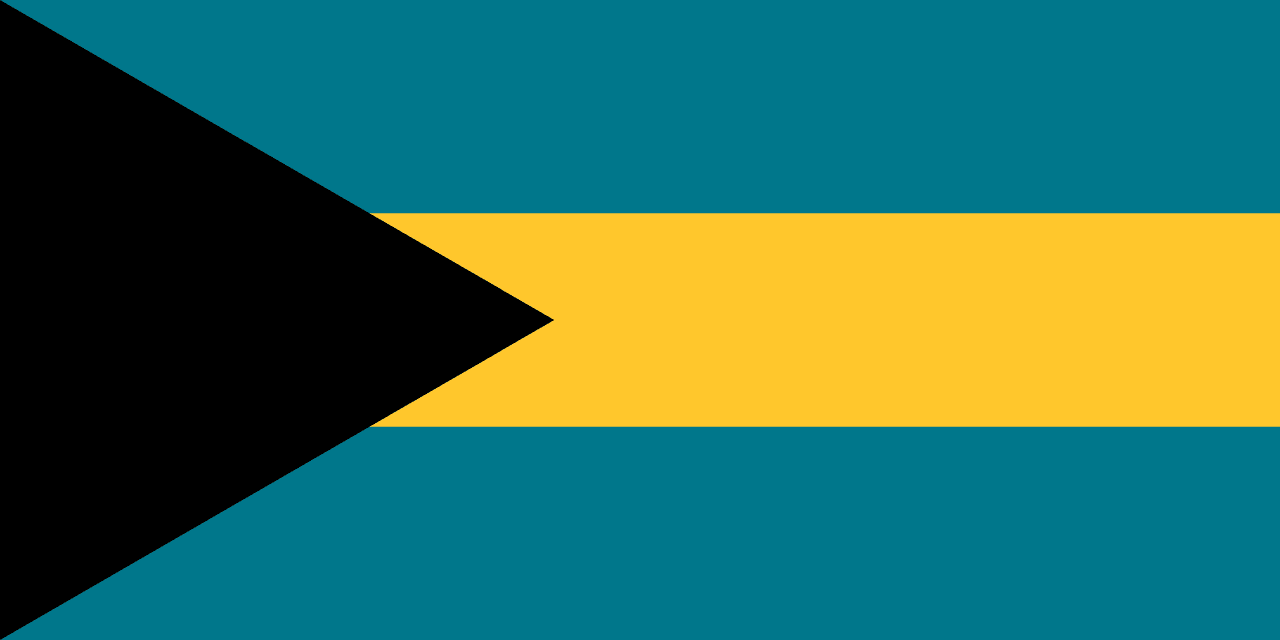
Bahamas
North America
Three horizontal stripes of aquamarine, gold, and aquamarine with a black equilateral triangle at the hoist, representing the waters surrounding the islands, the golden beaches and sunshine, and the strength and determination of the Bahamian people united in their love for their homeland.
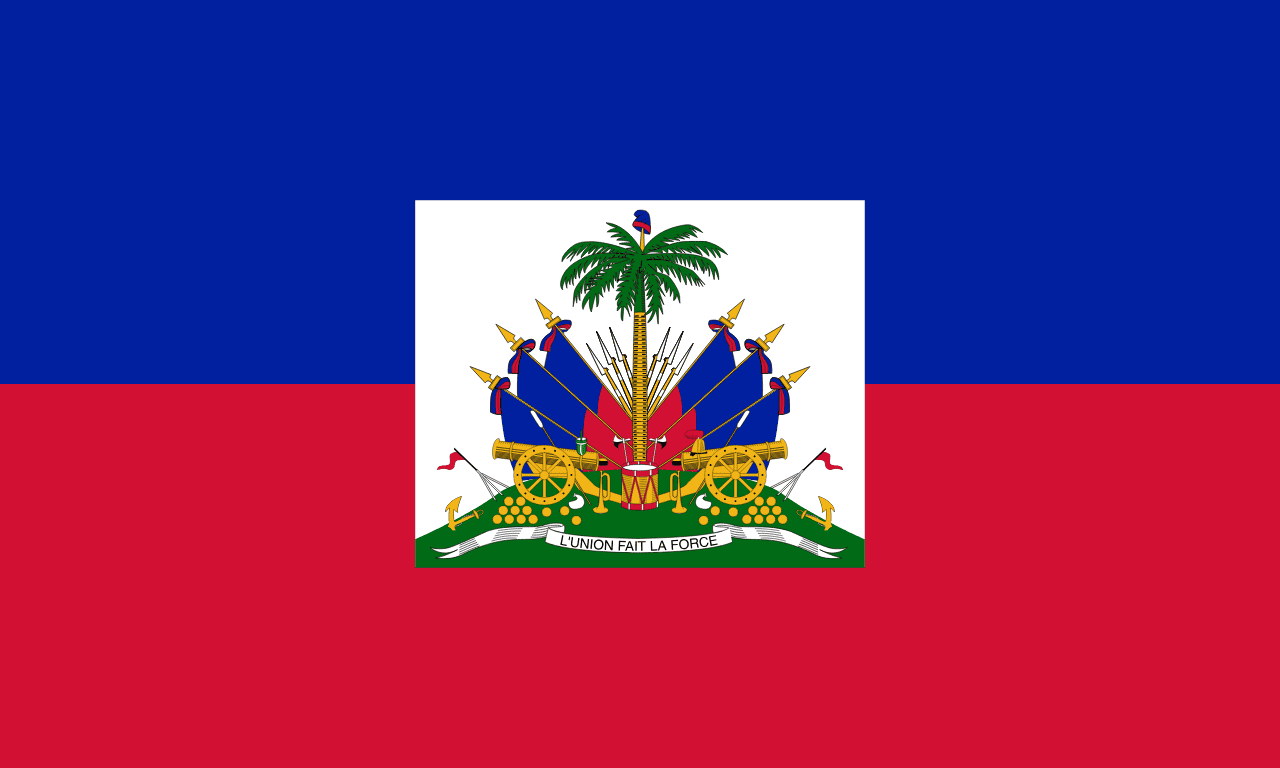
Haiti
North America
Two horizontal stripes of blue over red, representing the union of black and mixed-race Haitians and the blood shed for independence, making Haiti the first independent black republic and symbol of successful slave revolution.
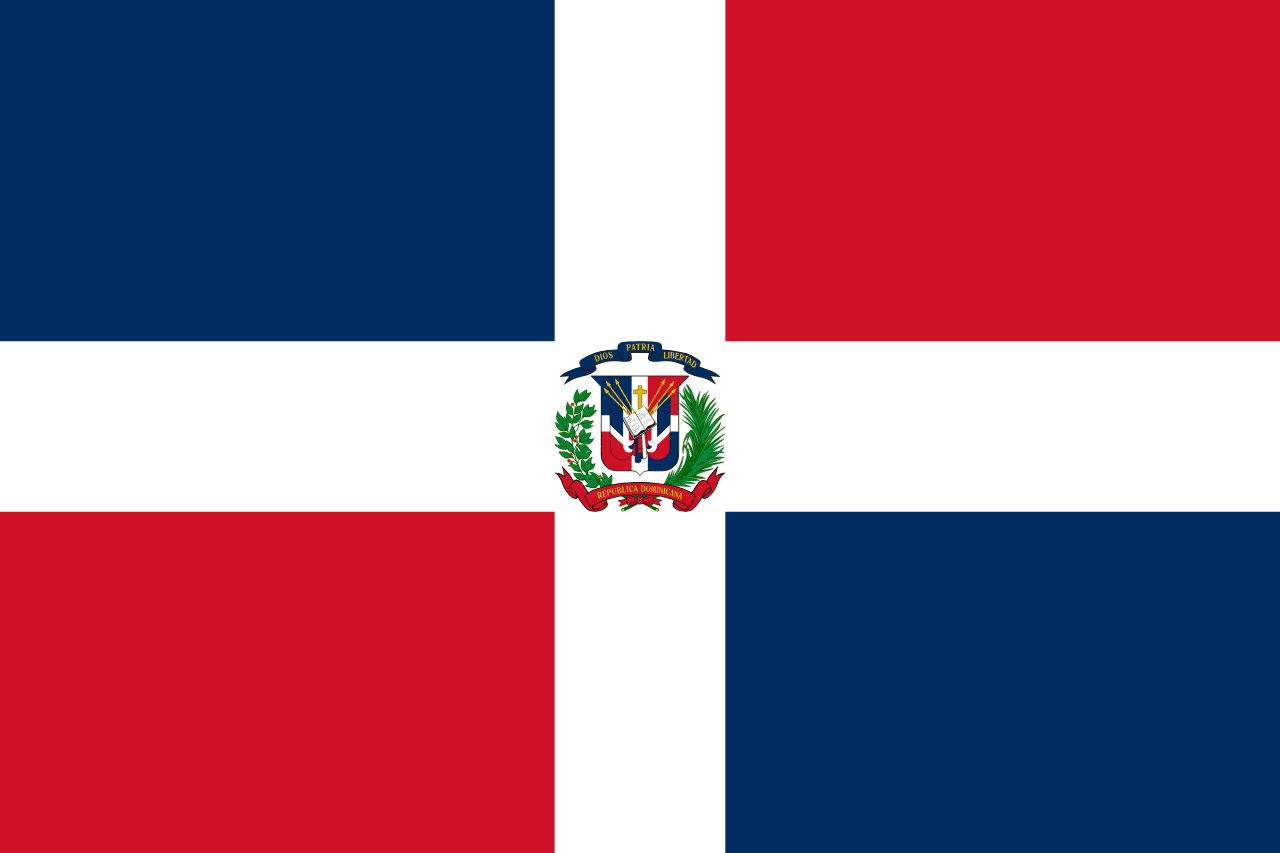
Dominican Republic
North America
Four quarters alternating blue and red separated by a white cross, with the national coat of arms in the center, representing liberty, the blood of heroes, salvation and peace, and the Christian faith of the Dominican people.
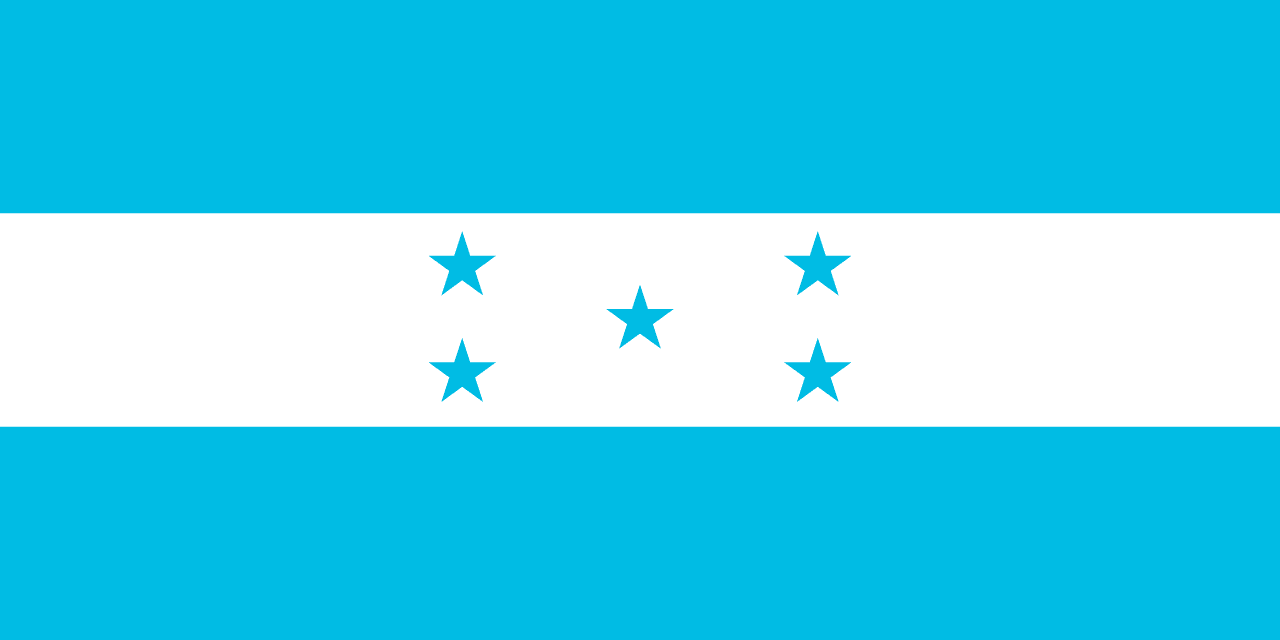
Honduras
North America
Three horizontal stripes of blue, white, and blue with five blue five-pointed stars arranged in an X pattern on the white stripe, representing the Pacific and Atlantic oceans, peace, and the hope for Central American unity.
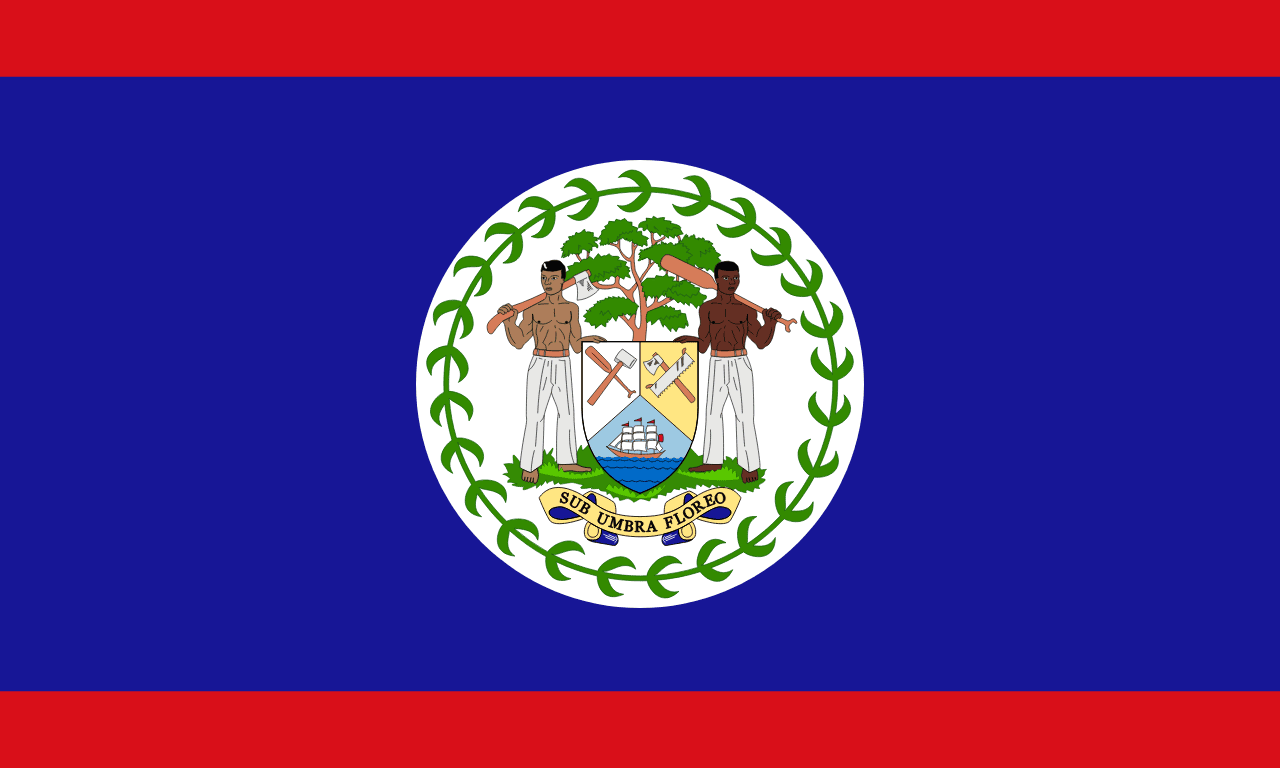
Belize
North America
A blue field with red stripes along the top and bottom edges and the national coat of arms in a white circle at the center, representing the ruling People's United Party, the opposition United Democratic Party, and the peace that unites them, making it the only national flag to feature human figures.